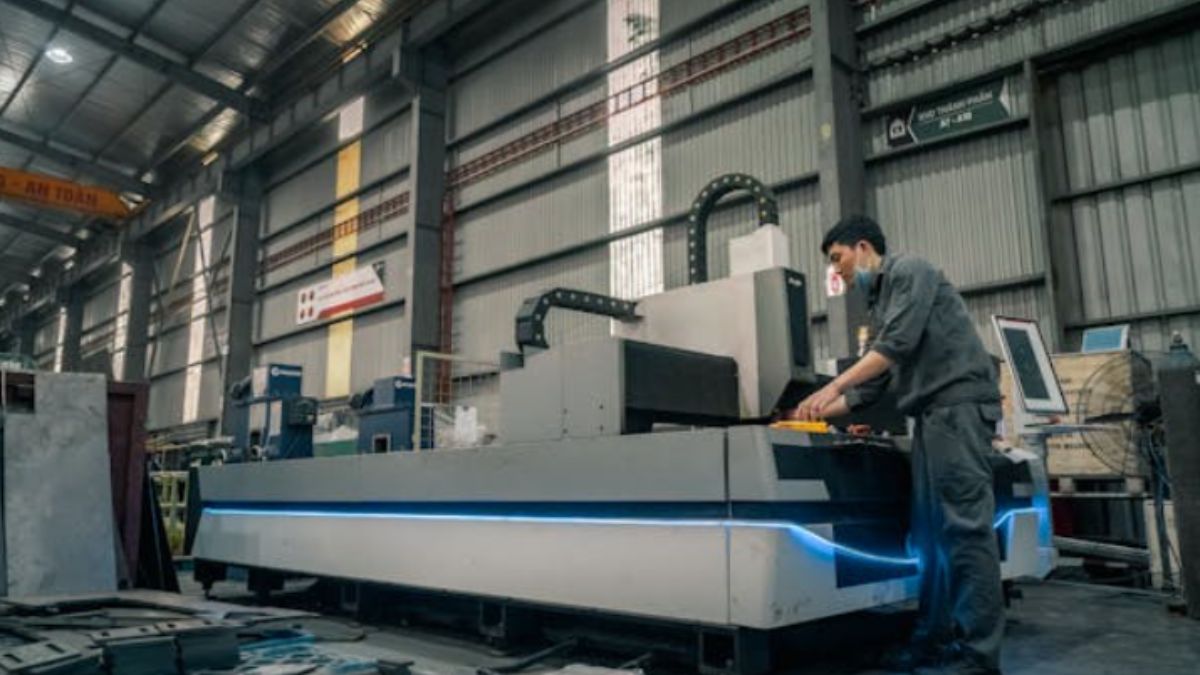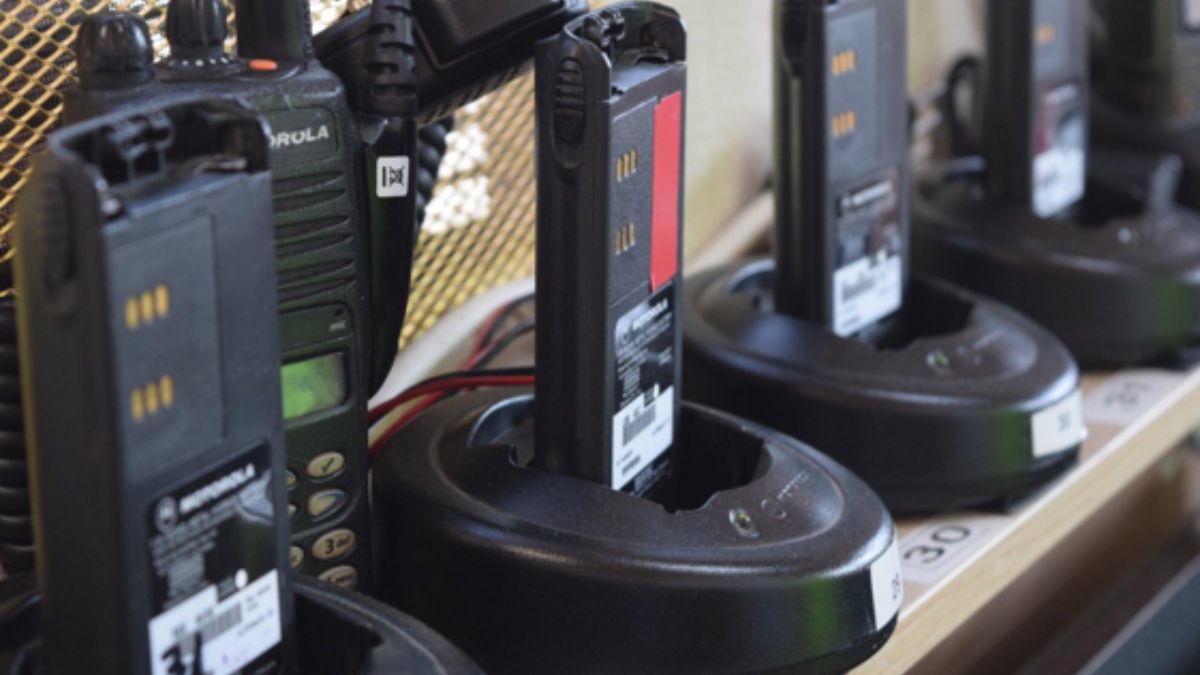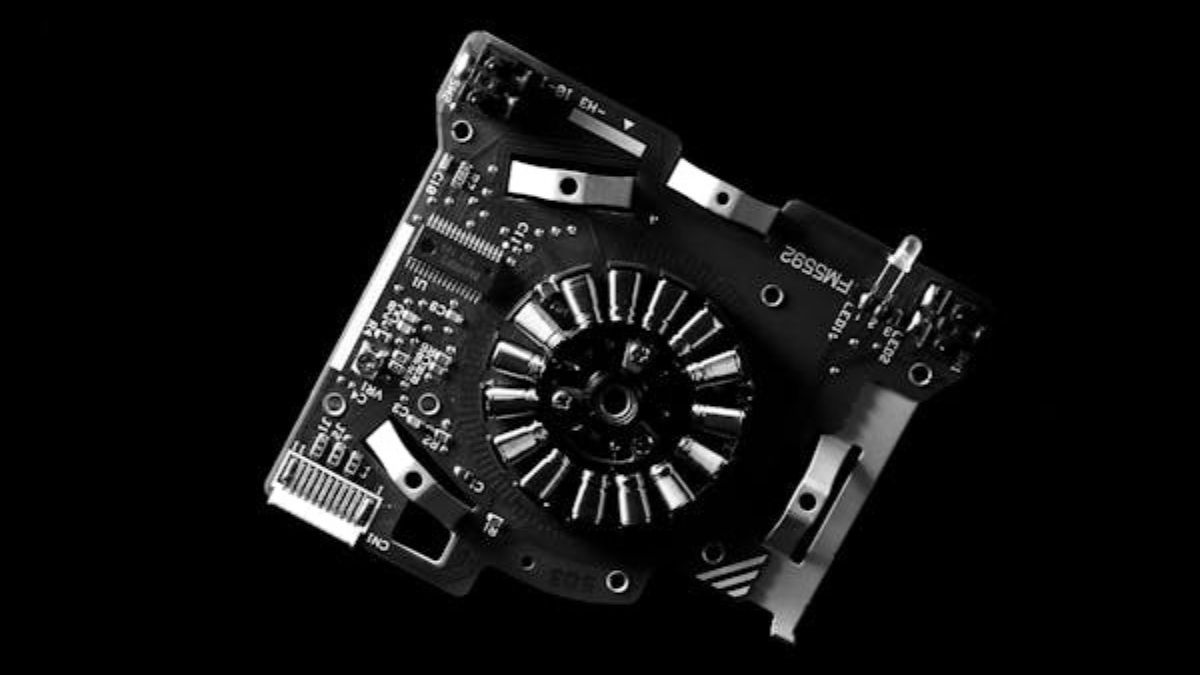AUTOMOBILES
Munich Motor Works: The Best Audi Repair Workshop in Dubai

Is it time for your Audi repair? If you’re an Audi owner in Dubai, you know the importance of maintaining your car with the best possible care. Your Audi deserves expert attention to keep it running smoothly, and finding the right Audi service center can make all the difference.
Munich Motor Works (MMW) is the top choice for Audi repair in Dubai. Let’s explore why this car service Dubai stands out and why you should consider it for your next car check.
Why Choose Munich Motor Works?
Expertise and Experience
Munich Motor Works has a team of Audi car technicians who are exceptional at repairing luxurious Audi models. The car repair workshop is characterized by experienced personnel who are used to working with all European and German cars.
The team can handle matters concerning the diagnosis of any system failure in a car model while offering economical options within the quickest period possible.
Advanced Diagnostic Tools
They use high-tech diagnostic equipment at Munich Motor Works, which helps them to spot problems with minimal error margins and provide accurate repairs and replacements as required. Munich Motor Works can always help you whether it’s a big or small Audi repair.
Genuine Parts
To have a vehicle that is reliable and secure, it is essential to use only authentic Audi components. Munich Motor Works utilizes genuine parts only which guarantee high quality levels for your Audi thereby keeping it in good shape over time.
They are manufactured specifically to suit your vehicle impeccably and function in harmony with it hence leaving you without any doubts about their reliability.
Comprehensive Audi Services
Regular Maintenance
To run your Audi efficiently, it is important to conduct regular checkups. For example, you can get such services as oil change, brake inspection, tire rotation, and more at Munich Motor Works.
These routine checks help prevent bigger issues down the road and ensure your car is always ready to hit the road.
Engine Repair
The engine of your Audi is the heart of the vehicle; therefore, it should be handled with care. Munich Motor Works specializes in offering full-service engine repair to every Audi model.
They have experienced mechanics who always ensure that the engines that are tuned up there do not develop any problems later because these technicians know what exactly causes wear and tear around an engine and how to repair it.
Transmission Repair
Transmission-related issues can get complicated quickly making them expensive in the long run if they are not attended to immediately. Munich Motor Works mechanics are well-versed with mechanical issues related to the transmission system and they can fix any problems with your transmission.
Electrical System Repair
Modern Audis come with advanced electrical systems that require specialized knowledge to repair. Munich Motor Works has the expertise to handle any electrical issues, from battery problems to complex wiring issues. They ensure your car’s electrical system is functioning perfectly.
Customer-Centric Approach
Transparent Pricing
One of the standout features of Munich Motor Works is its transparent pricing. They provide detailed estimates before starting any work, so you know exactly what to expect. There are no hidden fees or surprise charges, making it easier to budget for your car’s maintenance and repairs.
Excellent Customer Service
Customer satisfaction is a top priority at Munich Motor Works. Their friendly and professional service advisors are always ready to answer your questions and address your concerns. They take the time to explain the repairs needed and keep you informed throughout the process.
Convenient Location
Munich Motor Works is conveniently located in Dubai, making it easy to access from anywhere in the city. Their state-of-the-art facility is equipped with the latest tools and technology, ensuring that your Audi receives top-notch care. Whether you need a quick oil change or a major repair, Munich Motor Works’s location is easily accessible.
Conclusion
To achieve topmost performance and prolong the lifetime of your Audi, you should ensure it is taken care of properly. In terms of Audi servicing workshops in Dubai, Munich Motor Works stands at the top because of its skilled mechanics, modern diagnostic machines & being customer-focused.
Munich Motor Works is your one-stop shop if you want general servicing or any complicated fixing. Choose Munich Motor Works for your next Audi car check and experience the difference. Your Audi deserves the best, and Munich Motor Works delivers just that.
AUTOMOBILES
Claims Automation and Regulatory Compliance: Best Practices

The insurance sector is undergoing rapid transformation, driven by technological innovation and growing customer expectations. Among the most significant developments is the adoption of automation in processing insurance claims. Automating claims not only improves operational efficiency but also enhances customer satisfaction by accelerating turnaround times. However, as companies adopt these technologies, staying aligned with regulatory standards remains a crucial concern. Balancing speed with compliance is essential, and best practices can ensure insurance providers achieve both effectively.
One of the primary advantages of insurance claims automation is the ability to streamline traditionally manual tasks such as data entry, claim validation, and payment processing. Automation allows insurers to handle higher claim volumes with fewer errors, significantly reducing operational costs and minimizing fraud risks. The use of digital tools, including AI and machine learning, also enables better decision-making by flagging suspicious claims and identifying trends that require human intervention. As these technologies evolve, insurers can focus more on customer care and less on paperwork, driving greater efficiency across the board.
Despite these benefits, automation must operate within the boundaries of strict regulatory frameworks. Insurance is a highly regulated industry, with federal and state laws guiding data privacy, fair treatment, and accurate reporting. Failing to meet these standards can result in hefty penalties and damage to reputation. Therefore, it is vital for insurance providers to ensure their automated systems are built with compliance in mind from the start. Regulatory considerations should not be an afterthought—they must be integrated into the design and deployment of every automated workflow.
A key best practice in this context is implementing transparent audit trails. Automated systems must maintain clear records of every action taken during the claims process. This not only supports internal reviews and quality control but also simplifies external audits by regulatory bodies. Ensuring data accuracy and accessibility also helps insurers maintain trust with both regulators and customers. Audit trails can be particularly helpful when resolving disputes, as they provide a detailed account of every interaction.
Another important aspect of insurance claims automation is data protection. With claims processing relying heavily on personal and financial information, compliance with laws such as the Health Insurance Portability and Accountability Act (HIPAA) and the Gramm-Leach-Bliley Act (GLBA) is non-negotiable. Automated systems must include strong encryption protocols, access controls, and monitoring mechanisms to guard against unauthorized access or data breaches. Regular system assessments and updates are also recommended to keep up with evolving security threats.
Collaboration between compliance officers, IT teams, and operations staff is essential to align automation with regulatory expectations. Before deploying any automation solution, stakeholders should conduct a comprehensive risk assessment and map out all potential compliance pitfalls. This proactive approach allows companies to embed safeguards into the process rather than relying on post-deployment fixes. Training employees on the limitations and oversight of automation tools can also help in maintaining a compliant environment.
Flexibility is another best practice when integrating automation in claims processing. Regulations can change over time, and automated systems must be adaptable enough to accommodate new rules without requiring a complete overhaul. Configurable workflows and modular software architectures enable quick updates while maintaining system integrity. Additionally, insurers should prioritize solutions that offer rule-based engines, allowing quick alignment with jurisdiction-specific compliance requirements.
Furthermore, regular compliance audits and real-time monitoring are key to ensuring long-term adherence. By setting up alerts for anomalies or deviations from standard procedures, insurers can catch issues early and make necessary corrections. Establishing a feedback loop between automated systems and compliance teams ensures continuous improvement and minimizes the risk of non-compliance.
Customer communication also plays a vital role. Automated claims processes must be transparent and easily understandable. When customers receive clear explanations about decisions and timely updates, it builds trust and reduces the likelihood of disputes. Including a human review option in complex cases adds another layer of credibility and ensures fair treatment, which regulators look upon favorably.
In conclusion, automating insurance claims holds immense promise for streamlining operations, improving accuracy, and enhancing customer satisfaction. However, these advantages must be pursued alongside a strong commitment to regulatory compliance. By adopting best practices such as transparent audit trails, strong data protection measures, cross-functional collaboration, and system flexibility, insurance providers can create a future-ready claims process that is both efficient and compliant. As technology continues to evolve, staying ahead of regulatory expectations while delivering seamless service will define the success of insurance automation initiatives.
AUTOMOBILES
Using Two-Way Radios to Enhance Workplace Safety

Do you want a faster way to keep your team safe at work? Two-way radios help workers talk quickly during emergencies or daily tasks.
Clear communication can stop accidents and save time. These radios are easy to use and work in many settings. From construction sites to warehouses, they keep everyone connected.
Want to know how they can make your workplace safer? Keep reading to learn more.
Talk in Real Time
Workers can speak to each other right away with two-way radios. There is no need to dial numbers or wait for a response. This helps save time during busy or dangerous moments. A quick warning can stop an accident before it happens. Everyone hears the message at the same time.
This keeps the whole team alert and ready. Clear updates can be shared within seconds. It also helps when workers are far from each other. Fast talking means fast action. This real-time tool makes the job site safer for all.
Respond to Danger Fast
Two-way radios let workers call for help right away. In case of fire or injury, every second counts. A quick alert can prevent the danger from spreading. Team members can hear the warning and act fast. Supervisors can send help without delay.
This fast action can save lives and protect property. Radios work even when phones fail or lose signal. They are made for use in loud or rough areas. One button can connect to the whole team. Quick response means safer workplaces every day.
Stay Connected Anywhere
Two-way radios work in places where phones may not. They can send signals through walls, tunnels, and wide spaces. This makes them great for factories, construction sites, and large buildings. Workers can talk to each other no matter where they are. Even in remote areas, radios help teams stay in touch.
Strong signals mean fewer lost messages. Everyone stays informed at all times. It’s easier to share updates and warnings right away. This connection keeps the team safe and on track. No matter the location, safety communication stays strong.
Cut Down on Risks
Clear messages help stop small problems from becoming big ones. Workers can report hazards before someone gets hurt. Quick updates keep everyone alert and aware. Misunderstandings are less likely when communication is direct. Radios make it easy to follow safety steps.
Teams can warn each other about moving equipment or spills. Fewer delays mean fewer chances for mistakes. Managers can check in without leaving their post. Fast talk leads to fast action during risky jobs. This simple tool helps keep everyone safer every day.
Work Smarter Together
Team members can share updates fast using two-way radios. Everyone knows what to do and when to do it. This helps avoid confusion and wasted time. Tasks get done faster when workers stay in touch. It also helps teams work safely in busy areas. When people talk clearly, mistakes happen less often.
Radios help leaders guide teams from anywhere on site. Good tools make good teamwork possible. You can find reliable options like ICOM Land Mobile Radios for sale here to improve your team’s safety and communication.
Learn More About Workplace Safety
Keeping the workplace safe protects everyone. Simple tools like two-way radios can make a big difference.
Fast communication helps stop accidents before they happen. When workers feel safe, they do their jobs better. Safety should always be part of the plan.
Looking for more tips and ideas? We’ve got you covered. Check out some of our other posts now.
AUTOMOBILES
The Importance of High-Quality PCB Design in Modern Electronics

Introduction
The intricate world of electronics forms the fabric of our modern lives, influencing nearly every sphere, from personal entertainment to industrial operations. At the heart of these powerful devices lies a fundamental component—the printed circuit board (PCB). Often overshadowed by the more conspicuous components it supports, the PCB is nonetheless the unsung hero of contemporary electronics, serving as the bedrock for functionality and innovation. High-quality PCB design is a pivotal factor in determining electronic device performance, overall reliability, and efficiency. Our exploration into the critical nature of PCB design will highlight its profound impact on the flourishing landscape of modern technology.
Foundation of Modern Electronics
PCBs provide the foundational framework essential for mounting and interconnecting electronic components in an organized manner. They are the linchpins that transform a medley of components into cohesive, functional systems. By hosting intricate networks of electrical pathways, PCBs ensure precise energy transmission among the elements, which is necessary for the devices to perform as intended. Modern advances have allowed for sophisticated design practices, like those utilized in hubs renowned for cutting-edge design, such as Orcad Design New York. These advancements have empowered engineers to create highly efficient boards, supporting compact and increasingly powerful technology, which is central to the development of our tech-driven world.
Impact on Performance and Reliability
The performance grade of electronic devices hinges upon the quality of their PCB design. A meticulously crafted PCB ensures optimal performance by facilitating seamless electrical flow and minimizing resistance and interference. This precision enhances device responsiveness and processing speeds, translating into a superior user experience. Equally important is the board’s role in ensuring reliability; by reducing risks of defects and breakdowns, high-quality PCBs extend device life and maintain consistent operation. Additionally, by engineering for minimal electromagnetic interference, designers ensure that devices operate without unexpected disruptions, thus fostering consumer trust and confidence in these devices.
Contribution to Energy Efficiency
In today’s eco-conscious era, energy efficiency is paramount for technology developers. Electronic devices with poorly designed PCBs can lead to significant energy loss, increasing operational costs and contributing to environmental degradation. High-quality PCB designs mitigate energy wastage through optimized layouts that streamline power distribution and minimize power dissipation. Such thoughtful design is especially critical in devices reliant on batteries, where energy efficiency directly correlates with prolonged usage times and enhanced consumer satisfaction. Thus, sophisticated PCB design contributes substantially to developing eco-friendly devices, aligning technological advancement with sustainable practices.
Role in Miniaturization and Complexity
The demand for smaller, more powerful electronics is a driving force behind current technological innovation. PCBs are pivotal in this miniaturization trajectory, enabling designers to pack complex functionalities into increasingly diminutive forms without sacrificing performance. Advanced techniques like multilayer boards and surface mount technology have revolutionized space utilization, allowing for the densification needed to fit more power into smaller devices. This capability is crucial in consumer electronics and aerospace sectors, where space and weight constraints necessitate highly efficient design. Through this lens, we appreciate the transformative role high-quality PCB design plays in facilitating complexity and evolutionary leaps in technology.
Enhancing User Experience
User experience is a focal point in modern electronics development, and high-quality PCBs directly influence this aspect by ensuring devices operate smoothly and efficiently. Fast, reliable devices with infrequent glitches heighten user satisfaction and brand loyalty. Moreover, the move towards sleek, lightweight, and aesthetically pleasing designs is partly driven by advancements in PCB design. By enabling slimmer profiles and reducing the need for bulky external features, modern PCBs align technological capability with consumer desires for portability and style. This synergy between function and form is instrumental in creating products that meet and exceed user expectations, solidifying the device’s role in everyday life.
Influence on Technological Advancements
PCBs catalyze innovation, forming the basis upon which cutting-edge technologies like artificial intelligence, advanced communications, and the Internet of Things (IoT) are integrated into everyday devices. By enabling seamless operation and integration, high-quality PCB designs ensure these technologies are not only accessible but also practical for widespread use. As pioneers in these fields continue to push boundaries, the adaptability and foresight embedded in meticulous PCB planning are crucial in maintaining the momentum of technological progress. This dynamic foundation ensures we keep pace with and actively shape the future, empowering industries and individuals with tools that enhance and expand capabilities.
Conclusion
The critical importance of high-quality PCB design in modern electronics is abundantly clear. As the backbone of all electronic devices, a well-designed PCB encapsulates the intersection of innovation and reliability, driving advancements and ensuring sustainable, powerful performance. By committing to excellence in PCB design, developers are poised to successfully navigate the challenges and opportunities of a rapidly evolving technological landscape, crafting devices that define and improve the modern experience. As we look to a future driven by technological innovation, the PCB will continue to stand as an irreplaceable element, underscoring the profound impact of quality design on the electronic devices that shape our world.
-

 HEALTH2 years ago
HEALTH2 years agoIntegrating Semaglutide into Your Weight Loss Plan: A Practical Guide
-

 HOME IMPROVEMENT2 years ago
HOME IMPROVEMENT2 years agoHow to Choose the Perfect Neutral Area Rug for Every Room
-

 LAW1 year ago
LAW1 year agoTeenage Drivers and Car Accidents in California: Risks and Parental Liability
-

 CONSTRUCTION1 year ago
CONSTRUCTION1 year agoConstruction Site Safety Regulations in New York and Your Rights as a Worker
-

 LAW1 year ago
LAW1 year agoPost-Divorce Considerations in California: Modifications and Long-Term Planning
-

 HOME2 years ago
HOME2 years agoSandra Orlow: The Teen Model Who Captivated the Internet
-

 FINANCE1 year ago
FINANCE1 year agoDigital Asset Management in Florida Estate Planning
-

 FASHION2 years ago
FASHION2 years ago7 Celebrity-Inspired Elegant Summer Dresses For 2024
